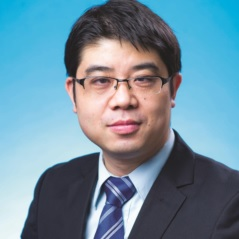Serration and Noise Behavior in Advanced Materials
A special issue of Metals (ISSN 2075-4701).
Deadline for manuscript submissions: closed (31 May 2015) | Viewed by 17408
Special Issue Editors
Interests: mechanical behavior; fatigue and fracture behavior; nondestructive evaluation; neutron/synchrotron studies of advanced materials, including bulk metallic glasses; nanostructural materials; high-entropy alloys; superalloys; steels; intermetallics
Special Issues, Collections and Topics in MDPI journals
Interests: metallic glasses; high entropy alloys; fatigue and fracture; flexible electronics and structural biomaterials
Interests: high entropy and amorphous alloys; serration and noise in materials; metamaterials
Special Issues, Collections and Topics in MDPI journals
Special Issue Information
Dear Colleagues,
“Noise” is everywhere in our daily life, such as the crackling noise arising from paper crumpling and fault movement during earthquakes. In materials science, the phenomenon of noise is also ubiquitous, particularly, in the study of the deformation behavior of materials, which usually manifests as serrated plastic flows. Over the past few years, this interesting and universal phenomenon has attracted tremendous research interest, which can be observed among a wide range of advanced materials, from granular matters, single-crystalline metals, AlMg alloys, low carbon and TWIP steels, shape memory alloys, high entropy alloys to metallic glasses. To provide a physical understanding of universal noise behavior, different elastic coupling models have been proposed, with a variety of scaling relations being predicted. However, the source of noise when these advanced materials are deformed is still being debated. To materials scientists, understanding the structural origin of the noise may help avoid catastrophic failure and therefore inform the design of plasticity in these advanced materials. In this Special Issue, we intend to provide comprehensive studies related to the serration and noise behavior of various advanced materials. Topics include theoretical modeling, experimental characterization, and numerical simulations.
Prof. Dr. Peter K. LiawProf. Dr. Yong Zhang
Dr. Yong Yang
Guest Editors
Manuscript Submission Information
Manuscripts should be submitted online at www.mdpi.com by registering and logging in to this website. Once you are registered, click here to go to the submission form. Manuscripts can be submitted until the deadline. All submissions that pass pre-check are peer-reviewed. Accepted papers will be published continuously in the journal (as soon as accepted) and will be listed together on the special issue website. Research articles, review articles as well as short communications are invited. For planned papers, a title and short abstract (about 100 words) can be sent to the Editorial Office for announcement on this website.
Submitted manuscripts should not have been published previously, nor be under consideration for publication elsewhere (except conference proceedings papers). All manuscripts are thoroughly refereed through a single-blind peer-review process. A guide for authors and other relevant information for submission of manuscripts is available on the Instructions for Authors page. Metals is an international peer-reviewed open access monthly journal published by MDPI.
Please visit the Instructions for Authors page before submitting a manuscript. The Article Processing Charge (APC) for publication in this open access journal is 2600 CHF (Swiss Francs). Submitted papers should be well formatted and use good English. Authors may use MDPI's English editing service prior to publication or during author revisions.
Keywords
- plastic deformation and serration behavior
- high entropy and amorphous alloys
- shape memory alloys and TWIP steel
- Barkhausen Noise
- structural units for plastic deformation
- PLC serrations in AlMg alloys and low carbon steels







